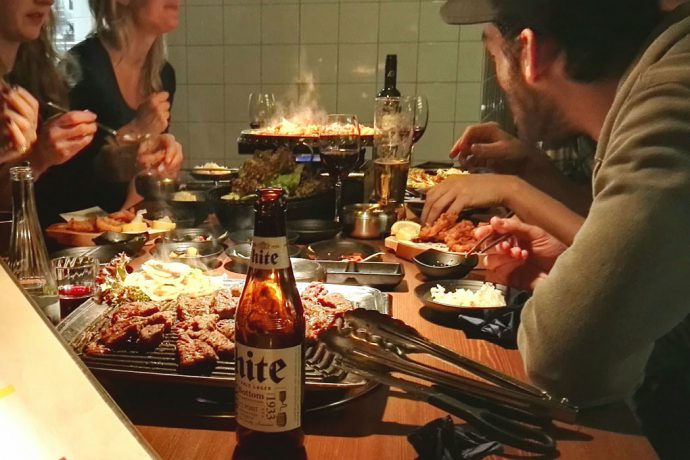 Depending on your food requirements, you can spend a lot or very little in Berlin; this is the only item, which won't break the bank.
Depending on your food requirements, you can spend a lot or very little in Berlin; this is the only item, which won't break the bank.
Breakfasts
Most of Berlin's youth hostels, hotels and guesthouses include breakfast in the room price (Fruhstuck). Sometimes it will be stingy ; French type meal consisting of rolls with jam and coffee, but the typical breakfast is somewhere between French, and an abundant Swedish table.
You generally get a plate of cold cuts (mainly sausages) and cheeses, and a selection of marmalades, jam and various types of honey. Sometimes there are additionally muesli or other flakes, as an alternative to cold cuts and cheeses.
As a rule, you can choose from several types of bread, which is one of the most characteristic elements of German cuisine. Both white rolls are popular, and wholemeal, often sprinkled with caraway seeds, ; coriander, poppy seeds or sesame seeds. Pumpernickel is especially popular, similar to pretzels (Pretzel) with salt, which taste completely different, than any foreign imitation.
The accompanying drink is usually coffee (usually freshly brewed), and while tea - plain or herbal - is also popular, hot chocolate is also a common alternative. Sometimes you can also get a glass of fruit juice (almost invariably orange).
If breakfast is not included in the room rate, you can buy them in some coffee shops, which often serve breakfast in the afternoon, and even in the evening. Prices range from 5 DM for the bread and jam and eggs to go with 20 DM + for a more exotic champagne-streaked menu.
Many coffee shops also have an unlimited Swedish buffet at a reasonable fixed price.
With limited finances, it is best to have a snack in one of the bakeries (baked rice), where coffee and cake will be a few marks.
Snacks and cheap food
The cheapest way to satisfy your first hunger is to buy Currywurst with fries for a few brands in one of the many Imbiss booths. They have become popular recently, Chinese and Greek kiosks with Greek kebabs called gyros served in fluffy, pitta-like bread, generally with tsatziki sauce and at a very low price for such a nutritious meal 4-5 DM. For something more specific, but for not much more expensive you can go to one of the six Imbiss restaurants, where the meal costs from DM5 to DM12, and at lunchtime to one of the two university canteens, theoretically only for students, but practically for everyone, who has a Żakowski appearance, and without any problems with the ISIC card. In any case, you should position yourself on the tail of the Bargeld (meal paid in cash).
Besides, there are plenty of fast food outlets and burger outlets, especially around the Zoo Station in the center. Takeaway pizza is very cheap - from 1.50 DM for a slice of cheese pizza, tomato and sausage. Presence of a large Turkish colony in the city, especially in Kreuzberg and the surrounding area, means, that there are also many points, where kebabs are sold.
At lunchtime in the main shopping areas, such as around the Wilmersdorferstrasse and Walter-Schreiber-Platz U-Bahn stations, some fish shops are worth visiting, where you can buy rolls with all kinds of fish fillings. Stuffed buns can also be bought after 3 DM in several bakeries in this area.
In the afternoon, it's time for Kaffe und Kuchen (coffee and biscuits) in one of the pretentiously elegant (and hence, deadly expensive) cafe in the center. Although this custom is inextricably linked with Austria, it also became popular in Germany. Custard cakes are ordered with different types of coffee, cakes and hand-made chocolates are a great place to raise your sugar level in the afternoon.